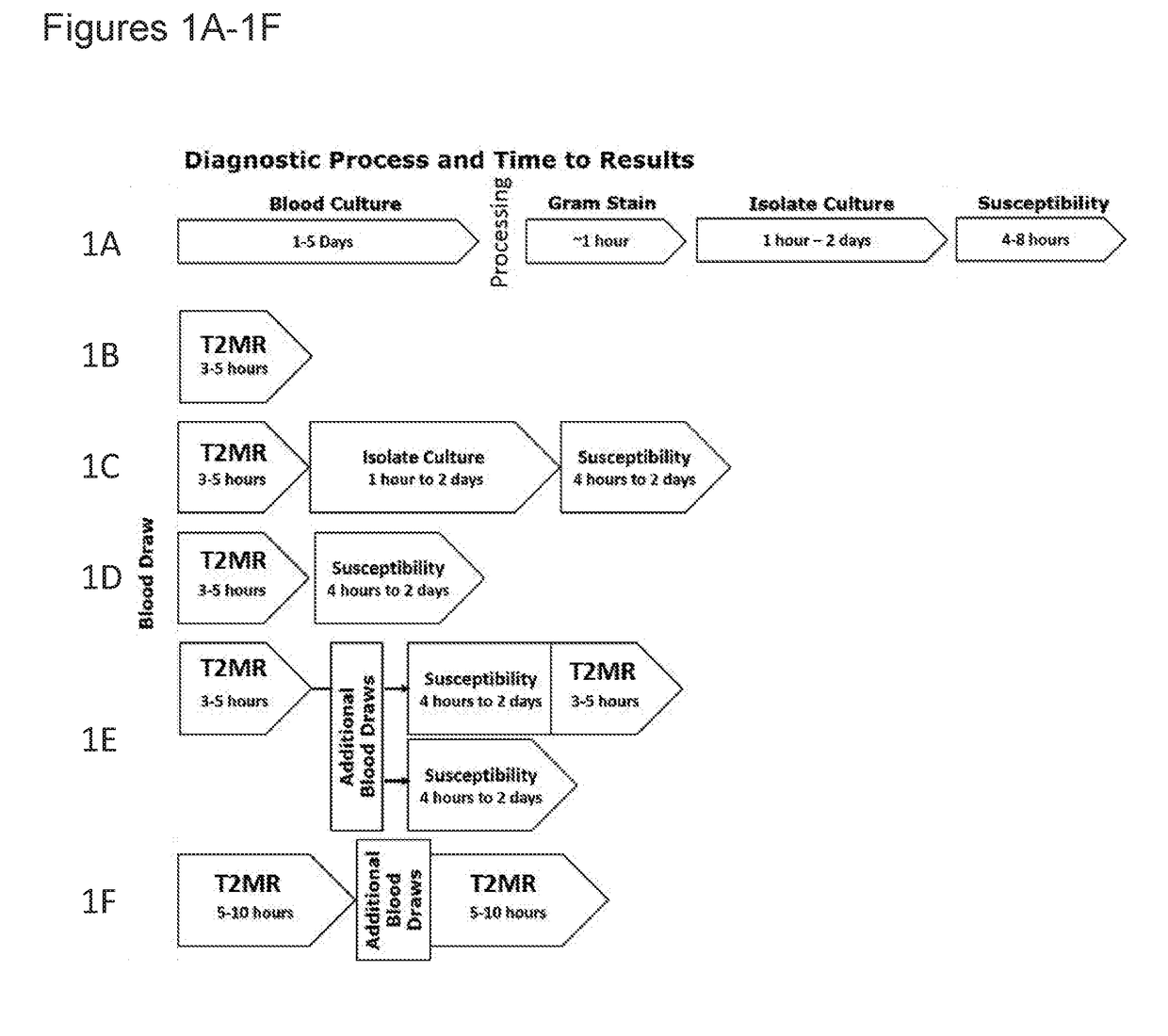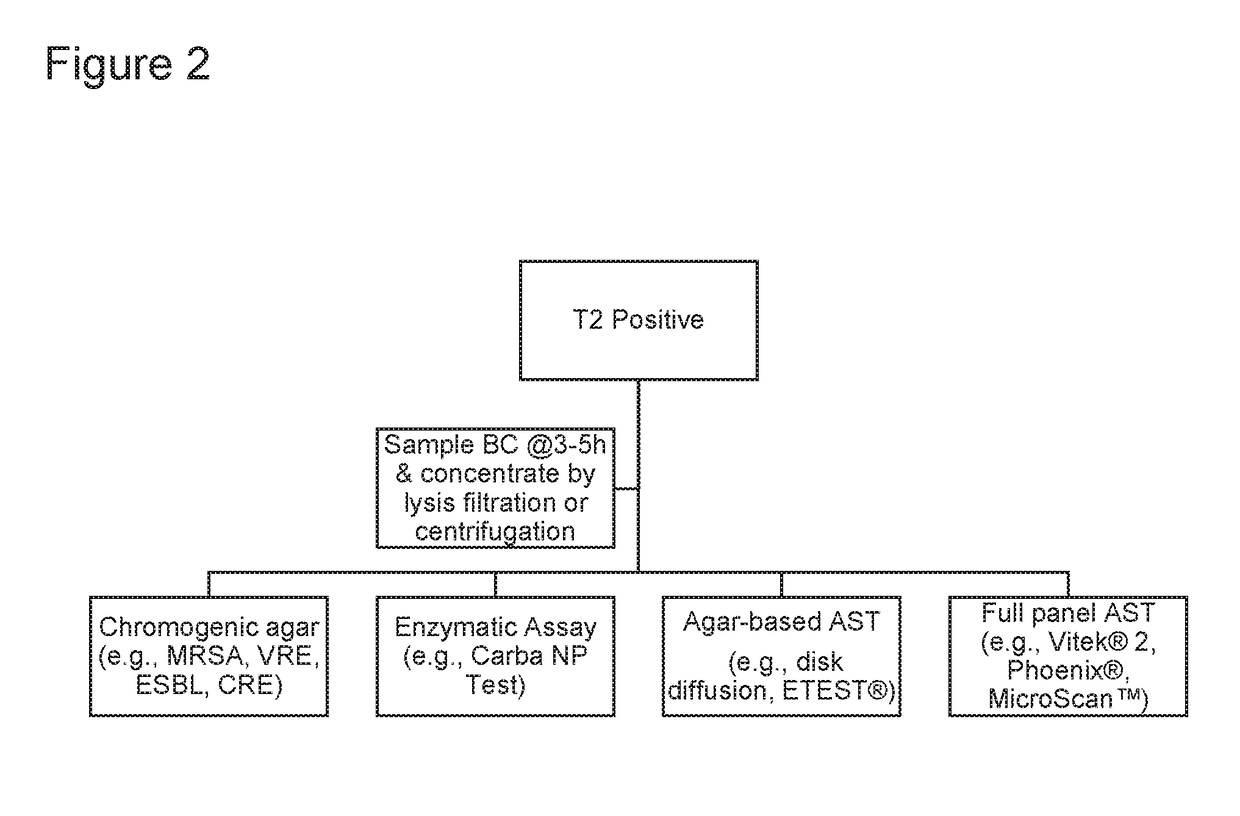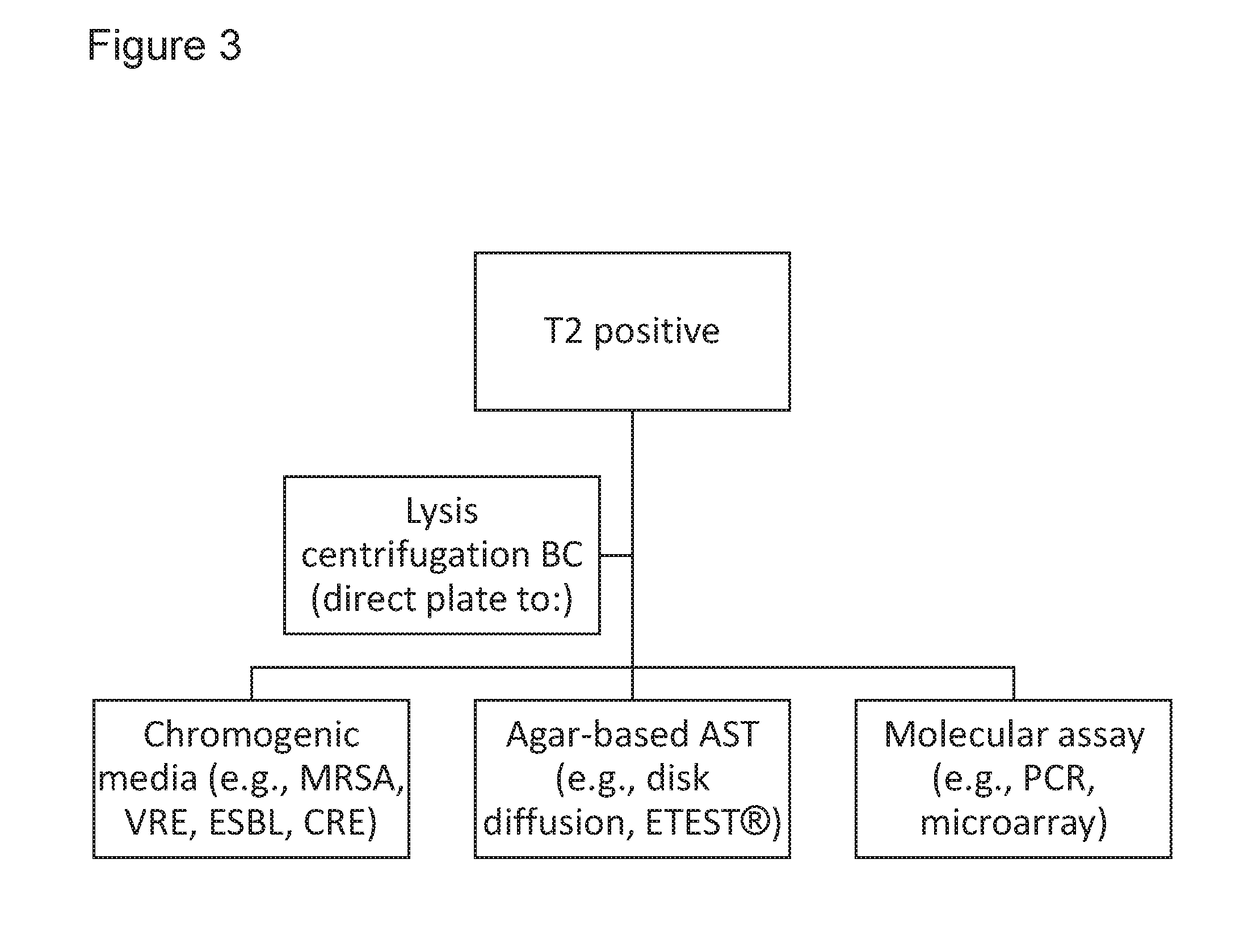Rapid antimicrobial susceptibility testing using high-sensitivity direct detection methods
a high-sensitivity, direct detection technology, applied in specific use bioreactors/fermenters, biomass after-treatment, biochemical apparatus and processes, etc., can solve the problems of difficult detection of bloodstream and tissue infections, insensitivity, and time-consuming, and achieve the effect of rapid antimicrobial susceptibility and testing susceptibility
- Summary
- Abstract
- Description
- Claims
- Application Information
AI Technical Summary
Benefits of technology
Problems solved by technology
Method used
Image
Examples
example 1
Targeted Therapy Following Pathogen Identification by T2MR Detection
[0271]Rapid determination of the identity of a pathogen in a biological sample can allow immediate targeted therapy. In this example, pathogen detection and identification is performed using a T2Dx® instrument (T2 Biosystems, Lexington, Mass.). A sample obtained from a subject (e.g., a 1.7-2 mL whole blood sample from a human suspected of having a BSI such as Candidemia) is inserted into the device, for example, as described in WO 2012 / 054639. The method described in Example 22 of WO 2012 / 054639 can be used for detection and identification of Candida species. Briefly, a sample obtained from the patient is inserted into the device. If the sample is a whole blood sample, the next step typically includes blood cell lysis and concentration, for instance, by (a) by mixing the whole blood sample with an erythrocyte lysis agent solution to produce disrupted red blood cells, (b) centrifuging the sample to form a supernatant...
example 2
Rapid AST Determination following T2MR and Pathogen Subculture
[0277]In some instances, T2MR-based methods for pathogen detection and identification, as described herein, allow for rapid AST results by allowing for subculture of a pathogen into more favorable media, allowing faster growth to yield sufficient biomass for AST testing (see, e.g., FIGS. 1C and 2).
[0278]A blood sample is obtained from a subject suspected to be suffering from Candidemia. A portion of the blood sample is used to inoculate a blood culture bottle (e.g., a BD BACTEC™ aerobic blood culture bottle). The blood culture bottles are incubated as recommended by the manufacturer. In parallel, an aliquot of the blood sample obtained from the patient is subjected to a T2MR-based detection method, for example, as described in Example 1 above. In this example, the T2MR-based method identifies Candida albicans as being present in the blood sample.
[0279]Next, based on the identification of Candida albicans in the blood samp...
example 3
Rapid AST Determination Following T2MR and Expression Analysis
[0280]T2MR-based methods for pathogen detection and identification, as described herein, allow for rapid AST results in conjunction with expression analysis to determine whether the pathogen expresses one or more genes characteristic of the pathogen, such as antimicrobial resistance genes and / or virulence factors (see, e.g., FIG. 1D).
[0281]A blood sample is obtained from a subject suspected to be suffering from bacteremia. A portion of the blood sample is used to inoculate a blood culture bottle (e.g., a BD BACTEC™ aerobic blood culture bottle). The blood culture bottles are incubated as recommended by the manufacturer. In parallel, an aliquot of the blood sample obtained from the patient is subjected to a T2MR-based detection method, for example, the method described in Example 22 of WO 2012 / 054639 in conjunction with a T2Dx® device. In this example, the T2MR-based method identifies S. aureus as being present in the bloo...
PUM
| Property | Measurement | Unit |
|---|---|---|
| diameter | aaaaa | aaaaa |
| diameter | aaaaa | aaaaa |
| diameter | aaaaa | aaaaa |
Abstract
Description
Claims
Application Information
 Login to View More
Login to View More - R&D
- Intellectual Property
- Life Sciences
- Materials
- Tech Scout
- Unparalleled Data Quality
- Higher Quality Content
- 60% Fewer Hallucinations
Browse by: Latest US Patents, China's latest patents, Technical Efficacy Thesaurus, Application Domain, Technology Topic, Popular Technical Reports.
© 2025 PatSnap. All rights reserved.Legal|Privacy policy|Modern Slavery Act Transparency Statement|Sitemap|About US| Contact US: help@patsnap.com



